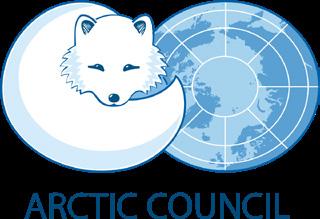
3 minute read
WELCOME
Welcome to this very special issue of Wildfire magazine focused on wildland fires in the Arctic, one that we hope won’t be the last. We are aware that at first glance this issue might seem strange –fire in a place typified by being cold and icy – but we think by the time you’ve finished you’ll agree that the content is timely in nature, surprising in scope, and important to address together.
We have curated an issue showcasing insights into the Arctic Council as well as into wildland fire in the Arctic. The Arctic Council is a body composed of Canada, The Kingdom of Denmark, Finland, Iceland, Norway, The Russian Federation, Sweden, The United States, and Permanent Participant organizations of Indigenous Peoples from around the circumpolar north including Aleut International Association, Arctic Athabaskan Council, Gwich’in Council International, Inuit Circumpolar Council, Russian Association of Indigenous Peoples of the North and the Saami Council. We’ve brought forward scientists, policy experts, leaders of Arctic Council working groups, Indigenous voices, and community voices to help highlight what’s occurring with wildland fire in the Arctic, the nature of the crisis, possible responses, how states are working together on the issue, Indigenous Knowledges around wildland and cultural fire, and more. Thank you to all the special contributors for this issue of Wildfire magazine.
Over the last two years, Norway has chaired the Arctic Council. During that time, we created a Chairship Initiative on Wildland Fires in the
Arctic along with Gwich’in Council International to raise the profile of the many facets of the wildland fire crisis in the Arctic. According to NASA MODIS data, some 174 million hectares have burned across the circumpolar Arctic in the last 20 years, creating problems for communities across the north from evacuations to suffocating smoke events, to the destruction of the wilderness upon which northern communities depend. What happens in the Arctic does not stay in the Arctic however, and the smoke from Arctic fires can darken skies thousands of miles from its source, and the emissions of these fires and the subsequent permafrost thaw has significant climate implications for the rest of the planet that must be accounted for.
Through the articles compiled here, we hope you’ll find a new interest in wildland fires in the Arctic, in research regarding the issue, in governance and emergency response in the unique settings of the Arctic, and most of all, we hope you’ll find a new spirit kindling within you to help us address the circumpolar wildland fire crisis. Thank you to all the contributors in this special issue, to Laura King, managing editor of Wildfire magazine, Mikel Robinson, executive director of the International Association of Wildland Fire, Anna Degteva of the Indigenous Peoples Secretariat, Kristina Bär former head of communications at the Arctic Council Secretariat, and special thanks to former IAWF president Charles “Chuck” Bushey for his special assistance.
Kind regards,
The Co-Chairs of the Wildland Fire Initiative, Chair of the Arctic Council Senior Arctic Officials, Ambassador Morten Høglund
Gwich’in Council International Head of Delegation, Edward Alexander
Photo by Troy Bouffard. See story page



